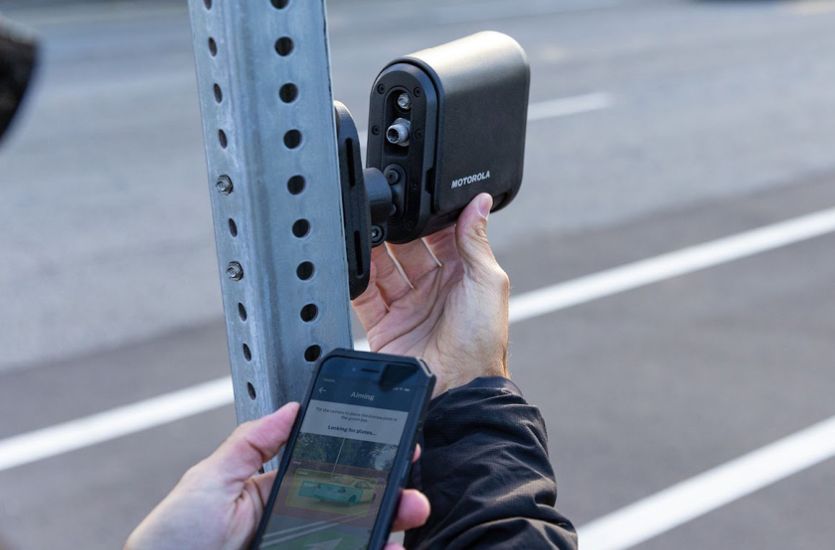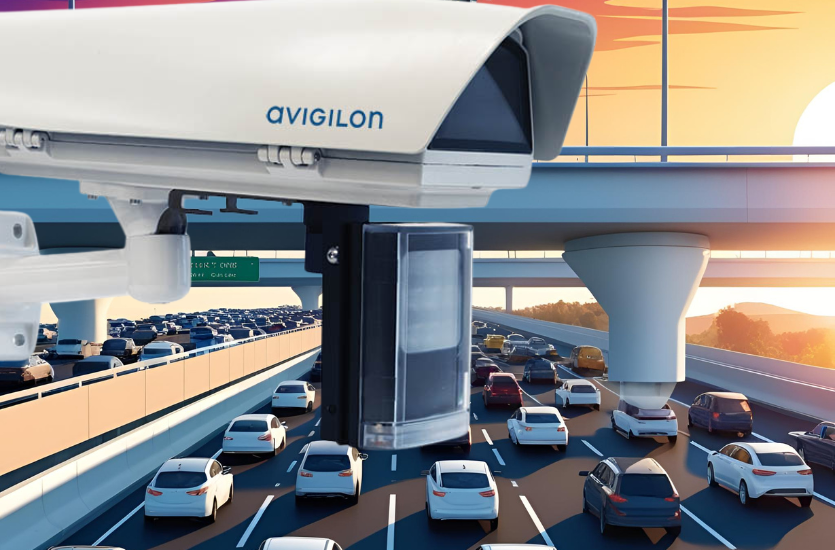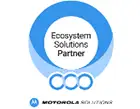Let’s cut to the chase (pun intended). License Plate Recognition (LPR) technology helps improve security by capturing and reading license plates automatically. In a recent article, we talked about how this system can support gated communities, parking lots, law enforcement, and more.
But just having LPR in place isn’t always enough—how well it works can vary from place to place. That’s what we’re focusing on here: what makes LPR accuracy better or worse. When a plate is read correctly, it can help track a stolen car, manage traffic, or log who comes and goes from a property. So, let’s take a closer look at what makes that possible.
What Is License Plate Recognition Accuracy?
Consider this scenario—a car speeds through a parking gate, and within seconds, the system records its plate and alerts the staff. But what if the system misread a number? That one small error could mean a missed warning or a lost opportunity to act. That’s where accuracy in License Plate Recognition (LPR) really matters.
LPR accuracy refers to how well the system can detect a license plate, read the characters on it, and record that information correctly. It’s not just about spotting a plate on a vehicle—it’s about reading it the right way, every time.
There are two important parts to this process. First, plate detection: that’s when the camera spots and frames the plate itself. Then comes character recognition: turning the numbers and letters on the plate into digital data the system can store and compare.
If either step fails, the system might record the wrong plate—or miss it entirely. That can be a problem for police, security teams, traffic flow systems, or even businesses tracking vehicles in and out of a location.
High accuracy helps keep things running the way they should. It helps law enforcement find the right vehicle. It helps a gated community know exactly who entered. And it helps businesses stay on top of deliveries or parking access.
So, while LPR technology is powerful, its value depends on how well it reads each plate. The better the accuracy, the more you can trust the system to do its job.
Key Factors That Impact LPR Performance
LPR systems can do a lot—but their performance depends on more than just the equipment. A variety of real-world factors can make the difference between a clear, accurate read and a missed or incorrect one. If you’re using LPR for safety, tracking, or traffic flow, it helps to know what can throw it off. Below, we’ll break down seven things that can impact how well your system works—and what you can do to get better results.
1. Lighting Conditions
Lighting can make or break an LPR read. Bright sunlight, shadows, headlights, or poor lighting at night all affect how clearly the plate appears in the image. Glare or backlighting can wash out numbers, especially on reflective plates. To improve accuracy, use cameras with infrared (IR) or low-light settings that work in different conditions. In darker areas, adding extra lighting—like floodlights or LED fixtures—can help the camera see the plate clearly without relying on unpredictable sources.
2. Camera Placement and Angle
Even the best camera won’t get a good shot if it’s pointing in the wrong direction. If the angle is too sharp or the plate is partially blocked, the image may be hard to read. Place cameras at entry and exit points where the view of the plate is clear and direct. Keep the angle as straight-on as possible, and try to keep the same distance and height across locations to get more consistent results.
3. Vehicle Speed
The faster a car moves, the harder it is to catch a clear plate image. At higher speeds, the camera might miss the plate altogether or capture it with motion blur. Most LPR systems work best when vehicles are moving slowly—think under 25 mph. To help with this, install high-frame-rate cameras that capture more images per second. Speed bumps, signs, or narrow entry lanes can also encourage drivers to slow down just enough for a better read.
4. Plate Design and Condition
Not all plates are created equal. Some have tricky fonts, colors, or borders that make them harder to read. Others may be bent, dirty, or covered in grime or snow, hiding important characters. Older or damaged plates can also reflect light oddly. Because designs vary from state to state—or even country to country—it’s smart to use software with flexible OCR technology that can adapt and still read plates even when they’re not perfect.
5. Environmental Elements
Weather can throw off LPR results. Rain, fog, and snow can blur or block the camera’s view. Dust and road grime can do the same. Sun glare off wet pavement or windshields can also make plates harder to see. As seasons change, long shadows and low sun angles come into play. To reduce these issues, use weatherproof camera enclosures and lens hoods or filters that cut glare and protect the lens from the elements.
6. Camera Quality and Configuration
Camera specs matter. A higher-resolution camera captures more detail, which helps when reading plates from a distance or in tricky conditions. Frame rate and shutter speed also affect whether the system can freeze a plate in motion. General surveillance cameras aren’t always up to the task—dedicated LPR models are built for this kind of job. Fine-tune the camera’s settings, including focus and exposure, to keep images sharp and readable day or night.
Software and System Integration
The brains behind the camera matter just as much as the camera itself. LPR systems rely on software to recognize and record what’s in the image. If the OCR engine is outdated or basic, it may misread characters or skip plates entirely. More advanced systems use AI to learn and improve over time. Good integration with back-end systems—like security databases or access logs—helps keep track of everything the camera picks up and supports smarter decision-making.

Common Mistakes That Can Reduce LPR Accuracy
There are plenty of things that can impact how well an LPR system works—but the good news is, many of them are within your control. With a few simple adjustments and a little upkeep, you can help the system read plates more clearly and more often. On the flip side, there are also a few common mistakes that can drag down performance without you even realizing it.
Watch out for these accuracy blockers:
- Mounting cameras too high or too far away: If the plate looks tiny or warped in the frame, it’s harder to read accurately.
- Neglecting routine maintenance: Dusty lenses, spider webs, or loose mounts can mess with focus and image clarity.
- Overlooking lighting changes throughout the day: What looks fine at noon may become unreadable at dusk.
- Relying on general surveillance cameras for LPR tasks: These cameras aren’t built for plate capture and often miss the detail needed to get a clean read.
Tips for Optimizing LPR Accuracy
Law enforcement agencies across the country are turning to License Plate Recognition (LPR) systems to help track vehicles, solve cases, and manage access points—and adoption is on the rise. In a recent survey, 40% reported they currently use LPR systems, while 52% said they haven’t used one yet. Just 8% had used one in the past but stopped. That’s a major jump from 2009, when only 23% of agencies surveyed were using this technology. The takeaway? More departments are seeing the value in LPR, and those numbers will likely keep climbing.
If you’re using LPR or thinking about it, there are smart ways to help the system work better. A little planning up front—and some regular check-ins—can make a noticeable difference in how well your setup performs.
Here are some practical tips to help improve LPR accuracy:
- Conduct site-specific evaluations before installation: Every location has unique lighting, traffic flow, and sightlines—plan with those in mind.
- Use adjustable mounts for fine-tuning camera positions: Being able to tweak the angle or height later helps you get a better shot.
- Clean lenses and housings regularly: A dusty or fogged-up lens can block out plate details.
- Pair LPR with access control or traffic-calming measures: Slowing cars down or guiding them into a clear view helps the system read plates more easily.
- Test and review captured footage regularly to adjust settings: If you notice unreadable plates, check the angle, focus, or lighting and make adjustments as needed.
Schedule a Free Consultation with EMCI Wireless
Even with the best equipment and intentions, getting reliable results from an LPR system isn’t always simple. Complex setups—like high-speed roads, busy entry and exit points, or large properties with multiple access areas—can make it harder to get clear, accurate reads. In situations like these, a professional setup can make all the difference.
That’s where EMCI Wireless comes in. We help design and install LPR systems that work the way you need them to. From selecting the right cameras to fine-tuning placement and settings, our team can support you every step of the way.
We proudly serve southern and central Florida, including—but not limited to—Deerfield Beach, Lauderhill, Miramar, St. Petersburg, and Tampa.
Whether you’re setting up a new system or trying to improve an existing one, we’re here to help. Let’s talk about what’s possible. Schedule your free consultation with our team at EMCI Wireless today.






